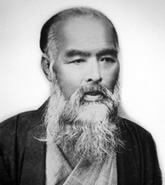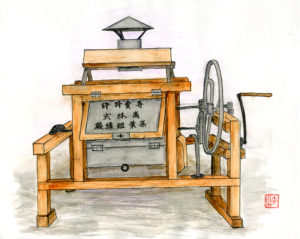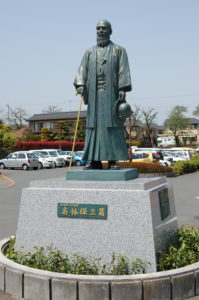
Most of the tea produced in Japan is processed by machine, because doing it by hand (temomi process) is very slow and costly.
Takabayashi Kenzō (高林謙三) changed the Japanese tea industry with his effort to mechanize the processing of green tea.
The life of Takabayashi Kenzō
He was born in 1832 in present day Hidaka city, Saitama prefecture. His family was poor and they worked as farmers.
At 16, Kenzō started to study medicine. He also learned Western medicine, especially surgery, under Satō Takanaka.
After finishing his studies, he opened his own practice in Kawagoe city. In time he would find success as a famous doctor.
For more than 200 years, Japan had very limited contact with foreigners. This period of isolation is known as “Sakoku”.
The United States sent Commodore Matthew Perry with the mission to open Japan for trade. On March 31 of 1854, the Kanagawa Treaty was signed under threat of force.
This led to Japanese exports of mainly silk and tea.
Kenzō knew that the demand for tea was much greater than the current supply. He bought a plot of land and started his own tea field in 1869.
However, he realized that manual tea processing wasn’t enough to meet the demand. At most, one person could process 5 kilograms of tea per day.
So he thought that the only way to mass produce tea would be to mechanize the process.
He considered this to be his national duty. Kenzō used his own funds and much of his time to develop tea processing machines.
The first tea processing machines
After many years of trial and error, Kenzō invented three machines: a drying machine, a steaming machine, and a rolling machine.
He obtained the second, third and fourth patents in Japan. The first Japanese patent belonged to the government, so his was the first private patent in the history of Japan.
Kenzō wanted to have a machine that would do all the tea processing from start to finish. When he was 50, he quit being a doctor in order to devote to his research.
But his first machines still needed a lot of work. The resulting tea had many quality issues, so no one wanted to buy them.
Eventually, he fell into financial trouble. On top of that he suffered from lung disease and had to leave to Tokyo with his family.
A revolutionary tea rolling machine

Nevertheless, he continued to work on his machines. In 1897 he completed his tea leaf rough rolling machine (茶葉粗揉機).
This was a big breakthrough. The initial rolling process with this machine had four times the efficiency while maintaining a good quality.
The next year, when Kenzō was 68, he obtained a patent for his machine. Modern rough tea processing machines still use his basic concept.
For the rolling stage of Japanese green tea, there are four processes, each one using a different machine. Kenzō didn’t invent all of them, but he paved the way for future inventors.
He then moved to Shizuoka prefecture where he was contracted for the manufacturing of his machines.

Unfortunately, just three years later he passed away from a cerebral apoplexy.
A statue of him was built in Hidaka in 2013.
There’s also a book about him written by Aoki Masako: Seeking the green drop (みどりのしずくを求めて).




